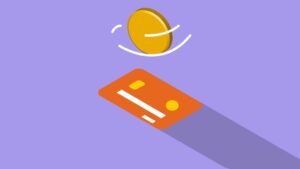The ability to start and exit positions without suffering any loss due to price movement is one thing every trader wants to experience. It is called slippage when a trader eventually fills an order at a price different from expected. Slippage tends to impact orders negatively depending on the price gap.
What is slippage in crypto? It is a common term in forex and stock trading. However, a trader can experience slippage in any form of trading. Read along to learn the causes of slippage and how you can successfully avoid it while trading.
What Is Slippage In Crypto & Why Would You Experience It While Trading?
You have filled an order to be executed at a specific price, only to see it cleared at a less favorable price. Most of the time, these are situations we have no control over. Here is the answer to what is slippage in crypto are a few reasons why slippage occurs while trading;
- Volatility — due to the high market volatility, it is easy for any significant headline or recent economic happenings to affect the market. While other traders try to fill orders, it results in price movements. The higher the market volatility, the higher the chances of experiencing slippage while trading.
Significant announcements can also result in a gap price when much trading activity doesn’t occur during the moment when the market closes and opens the following day. The absence of enough buyers and sellers in the market can cause delays in executing orders resulting in low volatility.
- Stop and Limit order — stop and limit order also results in slippage. Slippage will occur when traders fill orders without a limit order or set the stop loss at a less favorable rate. Order will have to proceed with stop orders or the limit price if there is low liquidity.
How Is Slippage Calculated?
You can calculate slippage in dollars or by percentage. Since you already know what is slippage in crypto and now you want to know the difference between the expected and eventual filling prices, you can start by calculating the total amount in dollars. You can then subtract the expected price from the price you got.
Slippage can be positive or negative depending on the price differences. Traders experience losses when they get a less favorable price than expected. On the other hand, it can be positive if the prices are higher than your expected price.
The simple way to calculate slippage is by dividing the dollar amount of slippage by the differences between the expected price and the executed price. To get the percentage of the slippage, multiply the amount you got by 100. In the worst scenario, your executed price will be the limit order you chose.
How to Avoid Slippage While Trading?
Volatility remains an integral part of the market, so it is normal for you to experience slippage while trading. You can’t wholly avoid slippage, except you want to give up on trading, which is not a good idea. However, you can reduce slippage and its effect on your trading.
- Use limit orders — if you are a trader who often uses market orders when starting or exiting a trading position, you are more likely to experience slippage. Since you know what is slippage in crypto, it is best if you change the type of market orders you use. Avoid placing your limit order at an unfavorable price.
It’s advised that you use limit orders very often because it lets traders choose their desired price. Most centralized exchanges allow set prices or higher prices for limit orders to help reduce the effect of slippage, which often occurs when traders make use of market orders.
- Avoid trading during major financial events or news — earlier, we mentioned that major headlines could cause slippage. You should always keep yourself updated and avoid trading around major economic events as a trader.
Major news or events can determine where the asset you are trading can go. Study the calendar, know when you should trade and when you shouldn’t. Day traders should avoid placing market orders during an economic news event or other major financial headlines.
Major financial events or announcements can cause high volatility, resulting in a price change. However, you won’t know if the price change is positive or negative until it happens. Except you are willing to take the risk, you shouldn’t trade during or around major financial events.
- Virtual Private Server — Since you’re clear with what is slippage in crypto, another way to reduce slippage while trading is using VPS. VPS allows traders to execute their trade quickly regardless of any technical problems. Traders can execute their trade quickly through a Virtual Private Server (VPS). You can access it from any part of the world anytime.
- Trade low volatile market and high volatile market — a low volatile market can be the best time to trade because the price movements are not uncontrollable. Trading in a highly volatile market is profitable because your order will be executed at the requested price since there are enough players in the market.
While it is nice to trade a low volatile market, avoid placing market orders during a low liquidity market such as weekends or overnight. The price of your orders can change due to unplanned situations during those hours when the market is closed.
Conclusion
Slippage is a major concern in crypto trading, forex, and the stock market because of the volatility of these markets. Any trader can experience slippage while trading. However, since you know what is slippage in crypto, you can reduce the risks by using limit orders and avoid situations where you will likely face delays due to fewer buyers and sellers. In essence, trade low volatile market and high volatile market.
More importantly, don’t trade during market events or announcements. Keep yourself updated on the happenings of the market.
FAQs
Is high slippage bad?
High slippage is bad because traders end up with low rate than they expected. Traders can experience high losses when the slippage is high. You can reduce losses by trading when the market is most active.
Does slippage affect trading?
High slippage percentage can affect your trading cost and your profit. Slippage can’t be avoided even though it factors into the trading costs, fees, commissions, and spreads.




